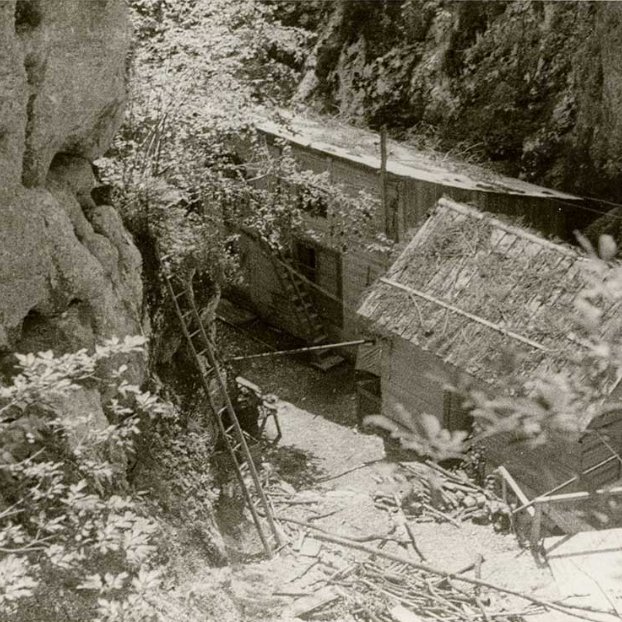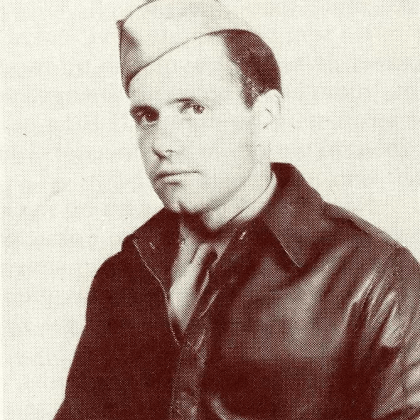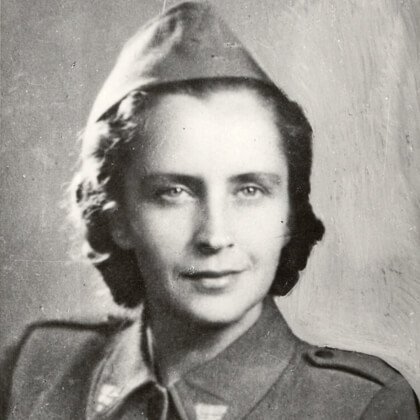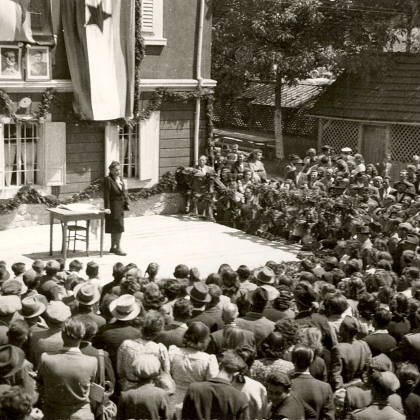Partisan Hospitals in Slovenia
“The primary task of the partisan health care is to provide first aid to the wounded and bring them to a safe and hidden place.”
(Dr Viktor Volčjak)
The Second World War raged between 1941 and 1945. People in Europe and throughout the world joined in their common struggle to defeat Fascism and Nazism, and restore peace. The resistance movement developed in Slovenia as well. It was distinguished by a well-organised health service; this included a number of hidden partisan hospitals. Occupying forces refused to recognise partisans as a regular army, and were killing the wounded and the sick. In order to protect themselves from enemy troops, the partisans built hospitals in forests, underground caves and other hard-to-reach places. This was made possible by Slovenia’s landscape diversity and the massive support of the people who supplied the hidden partisan hospitals with food, medicines and other accessories. These were built in the most inconspicuous way possible, which made them practically unnoticeable from even a few steps away. The hidden partisan hospitals were further protected by strict security measures, which were often their strongest weapon. Their exact location was known only to their staff and close associates, most of whom were locals. Patients were taken care of by 244 physicians, 260 medical students, 38 qualified nurses and around 1,000 provisional paramedics (many more according to some estimates) who had been trained at various nursing schools and courses. During the war, over 15,000 wounded and sick were treated in around 120 hidden hospitals. The hospital staff showed a high degree of tolerance and respect for international humanitarian law. In the Primorska region, major hospitals emerged only after the capitulation of Italy in autumn 1943. The largest and most organised partisan hospitals were “Pavla” in Trnovski gozd and “Franja” in the Pasice gorge in Cerkno.
A hidden hospital
“Whatever was built, demolished and renovated in the narrow Pasice gorge was not conceived by one head only or accomplished by just a few pairs of hands. Everyone participated in it.”
(Dr. Viktor Volčjak)
Probably the most famous of all hidden partisan hospitals is “Franja”, which was located in a hard-to-reach Pasice gorge in Dolenji Novaki, Cerkno. Wounded partisans were originally treated at a nearby farm in Podnjivč. When this became too dangerous, a local farmer, Janez Peternelj, showed Dr Viktor Volčjak a path to the Pasice gorge. Shortly afterwards the first wooden cabin was built, which accommodated the first wounded on 23 December 1943. So was born the Franja Hospital named after its manager, Dr Franja Bojc, who succeeded Dr Volčjak. Construction continued until the end of the war, when as many as 14 wooden cabins for various purposes were crammed together at the bottom of the gorge. The timber for the first few cabins was cut into beams at the construction site. Later, timber was donated by nearby farmers. It was sawn in Log and transported to the gorge by horse-drawn carts or on human shoulders. Some cabin parts were made in Cerkno and then assembled in the gorge. In addition to the hospital’s central ward, located in the gorge and intended for those with serious wounds, ten smaller wards were built at various locations from Cerkljanski vrh to Jelovica, namely: A, C, C1, Pokljuka 10, D1, D2, D3, Pokljuka, Š Stol I and Š Stol II.
In Franja, as well as all other hospitals, every precaution was taken to avoid detection by the enemy. For this reason, the main access to the hospital was a trail along the Čerinščica stream flowing through the gorge. In the final part of the trail, where the stream descends in small cascades, provisional wooden bridges were built. The first of these, leading to stony steps, was a lifting bridge. The wounded were transported to the hospital from the nearby farm, blindfolded and mostly at night.
They helped everyone
During the war, around 700 wounded and sick patients of various nationalities were treated in Franja’s central ward; apart from Slovenians, there were around 100 from other countries: 43 from Italy, 24 from the former Soviet Union, 15 from other Yugoslav republics, 9 from France, 2 from Poland, 2 from Austria and 2 from the United States. Approximately 300 were treated in the hospital’s external wards. Although being from different social and cultural backgrounds, they all fought for the same goal: freedom and peace. In view of this, nobody was refused admittance to the hospital.
Medical work, including complex surgeries, was performed by the following physicians: Viktor Volčjak, Franja Bojc Bidovec, Vladislav Klein, Franc Podkoritnik – Očka, Edvard Pohar, Bogdan Brecelj and Franci Derganc. The latter was also a member of the “flying surgical team” of the Ninth Corps, which operated from September 1944 until the end of the war. Most surgeries were performed with anaesthetics (ether, pentothal and other drugs) which were usually available, but there were shortages of antibiotics, blood and plasma. Dr Franja Bojc donated her own blood to the wounded twice, even though the hospital lacked instruments for the identification of blood groups. Disinfection of surgical cloths and instruments was also improvised. They were boiling everything until the end of 1944 when hot steam sterilisation was introduced. The nursing staff at the Franja Hospital included people of various occupations: from dressmakers and painters to housewifes, foresters, road repairers and others. They attended two nursing courses and learned while working. A total of 25 nurses and auxiliary paramedics worked in all the hospital wards. Only the head nurse, Lidija Zlatoper, had completed two years of nursing school. In addition to physicians and nurses, the hospital included equally important auxiliary staff, such as cooks, guards and stretcher bearers. Many of them were former patients who joined the staff after recovery.
Medicines and medical accessories were supplied through different channels. They were collected and delivered by field organisations. Some medicines even came from Milan and Graz. In March 1944, allied aircraft started dropping aid.
It was never discovered by the enemies
“As the number of cabins and incoming patients grew, we became increasingly concerned for their safety.”
(Ivan Goljat, military commander)
To avoid detection by the enemies, partisan hospitals observed very strict security measures. Franja was only accessible by a trail leading along a stream and across a lifting bridge; cabins were painted in camouflage colours, roofs covered with branches and incoming patients blindfolded. Franja was the only partisan hospital with its own military defence; this included an armed guard and reconnaissance. Guards were on duty around the clock and reconnoitrers from dawn to dusk. Their lookout post was located on a rock on the right-hand side of the stream, about 200 metres above the gorge. Reconnoitrers used a curious way of passing information to the hospital. They wrote it on a piece of paper, wrapped it around a small stone with a bandage and dropped it from their post to the hospital yard by the fountain. The message was picked up and forwarded to the hospital manager or political commissar (representative of the Communist Party, also member of the hospital management ). One part of the area was protected with a minefield. Several defence bunkers were built on both slopes of the gorge; when danger arose, they were manned by a partisan troika consisting of a machine gunner and two assistants. In addition to the defence bunkers, the staff built three shelters for the wounded; the first one, for non-walking patients, was located under the cabin for the wounded, and the other two in the gorge walls above the cabins.
Although enemies attacked the gorge twice, they never detected the hospital. The first attack by a German patrol occurred on 24 April 1944. The wounded were temporarily evacuated and after several relocations returned to the gorge. The second attack, on 24 March 1945, was repelled by the partisans in defence bunkers, while the wounded were kept in the shelters.
For freedom, for peace
“During the first few months, our bread was baked by housewives from Podnjivč, and after that by a partisan bakery in Cerkno. The food distributor in Cerkno made sure that the hospital received the best meat, liver and brains. Inhabitants of the Vipavska Valley were particularly generous on Christmas 1943, when farmers brought to Log over 1,500 parcels.”
(dr. Franja Bojc Bidovec,
After the First World War, Primorska was annexed to Italy where the fascist regime came to power in the 1920s. Slovenians, who hated the regime because it trampled upon their rights in various ways, massively joined the resistance movement during the war and especially after the capitulation of Italy. They set up national liberation committees which took care of various areas of life; their main task was to provide supplies for the partisan army and its institutions.
Initially, the food supply for the Franja Partisan Hospital was the responsibility of the National Liberation Committee from Novaki. In the Cerkno region, food was collected by young people and women’s organisations through voluntary contributions and mandatory military duties. Later, the National Liberation Committee from Cerkno also helped with this. In 1944, as the numbers of the wounded and hospital staff increased, Dr Volčjak and the supply service from the Ninth Corps, organised a food supply channel from the Vipava Valley. Food parcels were often accompanied by letters from donors who expressed their affection, support and solidarity with the partisan army, thereby raising the morale of the wounded. In this respect, cultural life in the hospital also played an important role. The medical staff were aware that, for a successful recovery of their patients, they had to keep their spirits high. In view of this, they organised several political and educational lectures. The hospital published its own bulletin entitled Bolniški list. It included two choirs, female and male, which were particularly important. It organised regular performances with drama plays, recitations and singing, which were very popular. Songs, accompanied by an accordion or guitar, evoked patriotic sentiments in the staff and patients, strengthening their determination to fight for freedom and peace.





